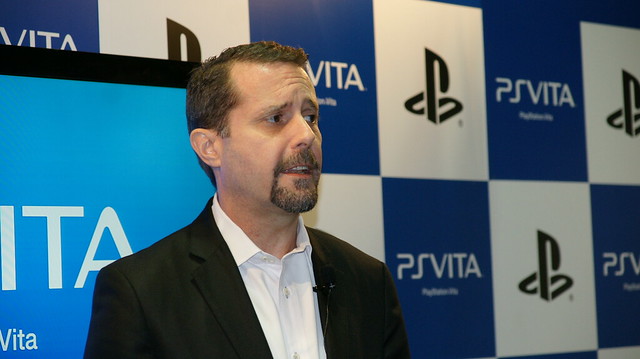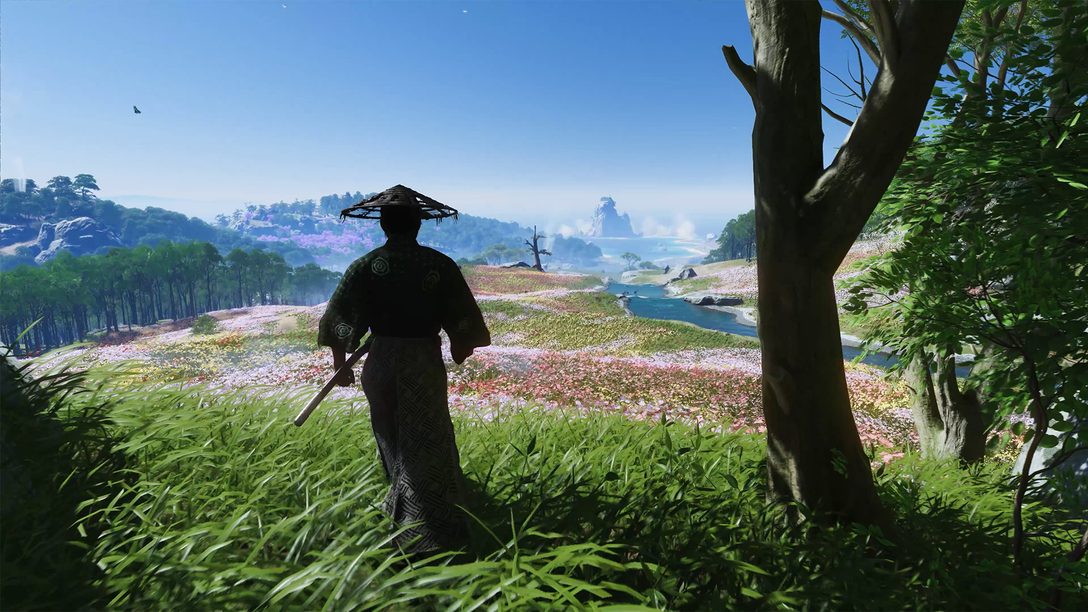
The launch of PlayStation Vita is just two days away and hopefully your thumbs are twitching at the prospect of getting it into your hands and enjoying what we believe is the strongest launch line-up of games in PlayStation history.
One man that has had a part to play in that history is Andy House, President and CEO of Sony Computer Entertainment. I recently spoke to him about life in Japan, the imminent launch of PS Vita and how we as a business are welcoming this proud new addition to the PlayStation family.
PlayStation.Blog: This is your second time working in Tokyo, how has the Japanese games market changed in the time you’ve been away?
Andy House, President and CEO, Sony Computer Entertainment: Well that intervening period was 15 years so things have changed dramatically. What’s interesting, and the one thing that hasn’t really changed, is that you still see these sales spikes of a system based on a single major game release, and I think that Japan is the most content-driven of the three major markets in that sense.
The other difference is that there seems to be a shift in Japanese gamers’ habits – in the last four or five years there seems to be a much greater focus on portable consoles and we’ve seen that in recent sales of PSP versus PlayStation 3.
I speak with a lot of games publishers and developers and, to be honest, I don’t think any of us fully understand what is underpinning that trend. Developer creativity in the portable space is a factor but I don’t think that is the only reason. It could be aligned with lifestyle habits and people generally spending more of their time commuting.
We’ve benefited greatly, of course, and PSP sales have been fantastic and will continue to be so, even though we now have a brand new console available.
PSB: PSP sold in large numbers very early into its launch while the home consoles have seen a more gradual ramp up. What is the target with PS Vita?
AH: I think it depends on which home console you are referring to – the ramp up on PlayStation 2 was spectacular while the increase in PS3 sales has been more gradual, in part because it was a more complex value proposition. We have to be very honest and say that the higher price point was a limiting factor when comparing PS3 to PS2.
PSP was very strong out of the gate because we focused on the most successful aspects of what was the most popular console of the time [PS2] and applied them to a portable. What we have learned since is that you also need to provide experiences that are tailored to a portable environment – that’s when something special happens.
PSB: PSP was positioned as a multimedia device and yet, while PlayStation Vita has many of the same multimedia features such as music and video playback, they have been less of a focus. Why is that?
AH: I’d say it’s because we’re at a time where people expect those features that you mentioned, as well as the ability to connect with friends, in all of their portable devices. For a positioning standpoint it is crucially important that we get PS Vita right as a games console because that is its key selling point and the key reason why the early audience is going to be interested.
Having said that, I do hope that the extra capabilities – whether that’s playing media or connecting with friends via Facebook, Twitter or FourSquare – are going to add an extra degree of delight when you start up your PS Vita for the first time.
PSB: Will we see more non-gaming applications in future?
AH: I see a lot of potential in that area further down the line as we learn more about what our customers are looking for. Our strategy for launch has been to fulfil the critical needs in areas such as social networking with Twitter, Facebook, Skype and FourSquare, and make sure that they are well designed, well integrated and available right from the start.
From there we will look at what else we can do, particularly with the 3G connectivity, to give people a greater feeling of immediacy with their games and other activities. This is an important area for us.
PSB: Can you explain the strategy behinds the retail model, with all games being available to download and certain titles also available on Game Cards?
AH: What we are trying to achieve is a retail model that is as consumer friendly as it can be. With PlayStation Vita we are offering customers the ease of downloading games where that makes sense, while also recognising that it may be more convenient to buy the more data intensive games on physical media, and providing that option with Game Cards.
Customers are telling us that they want both of those options – they like the immediacy and quick access that you get from a flash media solution but they don’t necessarily want to carry a lot of games around with them in addition to the device.
We’re trying to cater for both of those impulses, even though they’re slightly conflicted.
PSB: With that in mind, how will pricing react to the customer expectation that digital versions should be cheaper than physical copies?
AH: We are aiming to recognise that expectation and have a lower price point for downloadable versions of games; we will need to evaluate exactly what difference that will be.
We have fantastic relationships with retail partners who have a large stake in the success of PlayStation Vita and we want that to continue, but we recognise the need to have a lower price point for digital games taking into account that you don’t have packaging costs and other extra considerations associated with physical copies.
PSB: Are you able to qualify what makes a good portable game as opposed to a home one?
AH: I’d say it needs to have been distinctly designed to be on a portable and I think that one of PS Vita’s strengths is the way its interfaces lend itself to that.
There are ways that you can interact with existing franchises that are just not possible in the home and I think that’s what our customers are looking for – a tailored experience where the game is produced to a standard that you would expect from PlayStation, and presented on this jaw-droppingly beautiful OLED screen.
By building this set of tangible ways to interact with the device we have given developers a robust creative pallet to work with.
PSB: The game development climate has changed and we are now seeing smaller teams achieving great success with shorter lead times. How will we react to that with regards to PlayStation Vita, and in general as a company?
AH: There are two points to that and the first is that we have created a much easier development environment than we have for previous platforms. That facilitates experimentation and combined with the opportunities digital distribution provides, such as removing the risk of having to commit to an inventory stock, we are able to lower the barrier of entry for developers and hopefully encourage them to experiment and take risks.
An extension to that is PlayStation Suite which, for me, is an initiative that runs in parallel to PS Vita. What we have there is a very low cost development environment and an opportunity to immediately access a broad and growing range of Android devices and the install base that comes with them, as well as the option to make your content compatible with PS Vita. In essence, PlayStation Suite is an extra route into delivering PS Vita content that will be available to a much larger pool of developers, and in a much more agile, quicker to market way.
An extension to that is PlayStation Suite which, for me, is an initiative that runs in parallel to PS Vita. What we have there is a very low cost development environment and an opportunity to immediately access a broad and growing range of Android devices and the install base that comes with them, as well as the option to make your content compatible with PS Vita. In essence, PlayStation Suite is an extra route into delivering PS Vita content that will be available to a much larger pool of developers, and in a much more agile, quicker to market way.













Comments are closed.
43 Comments
Loading More Comments